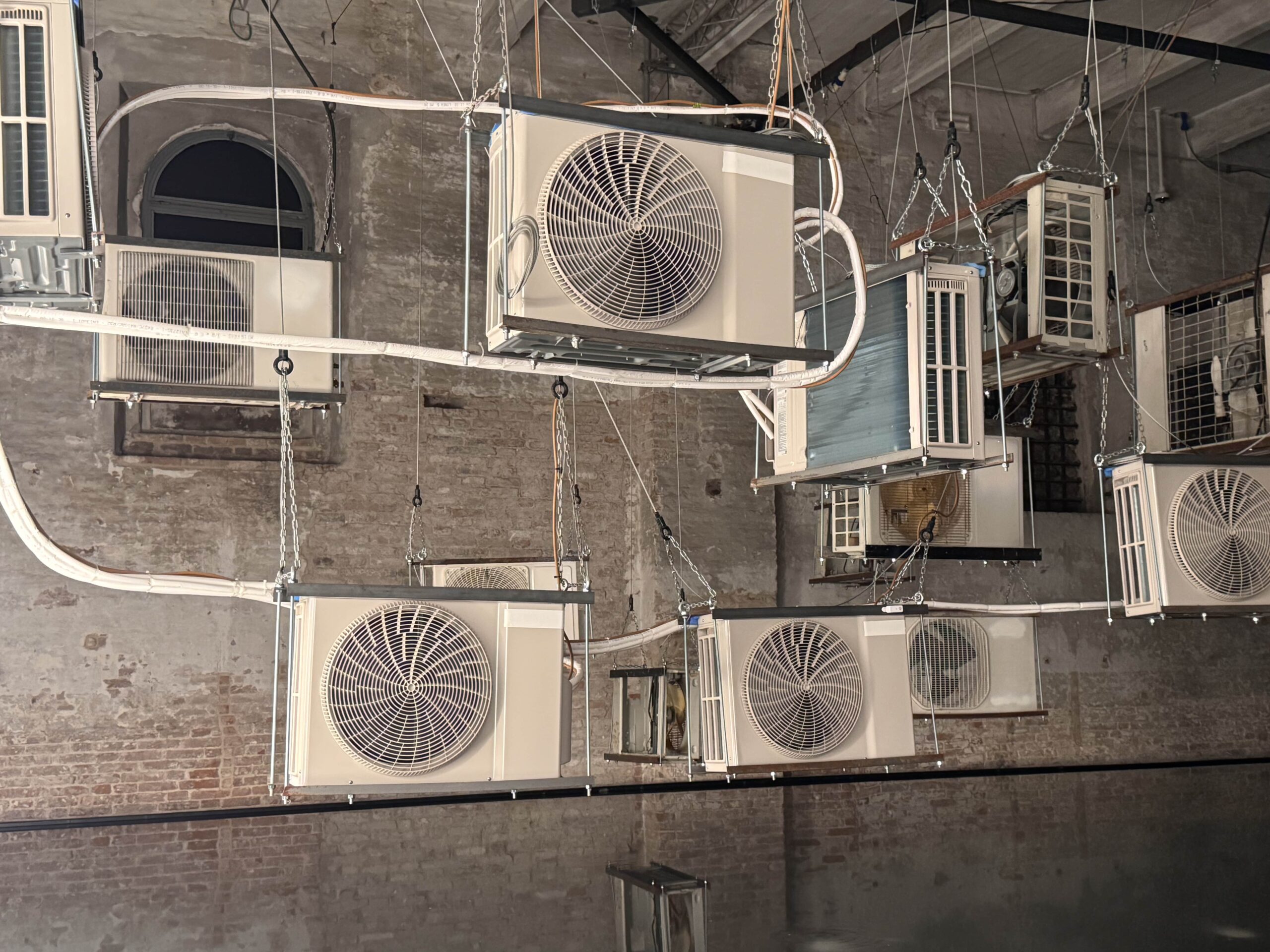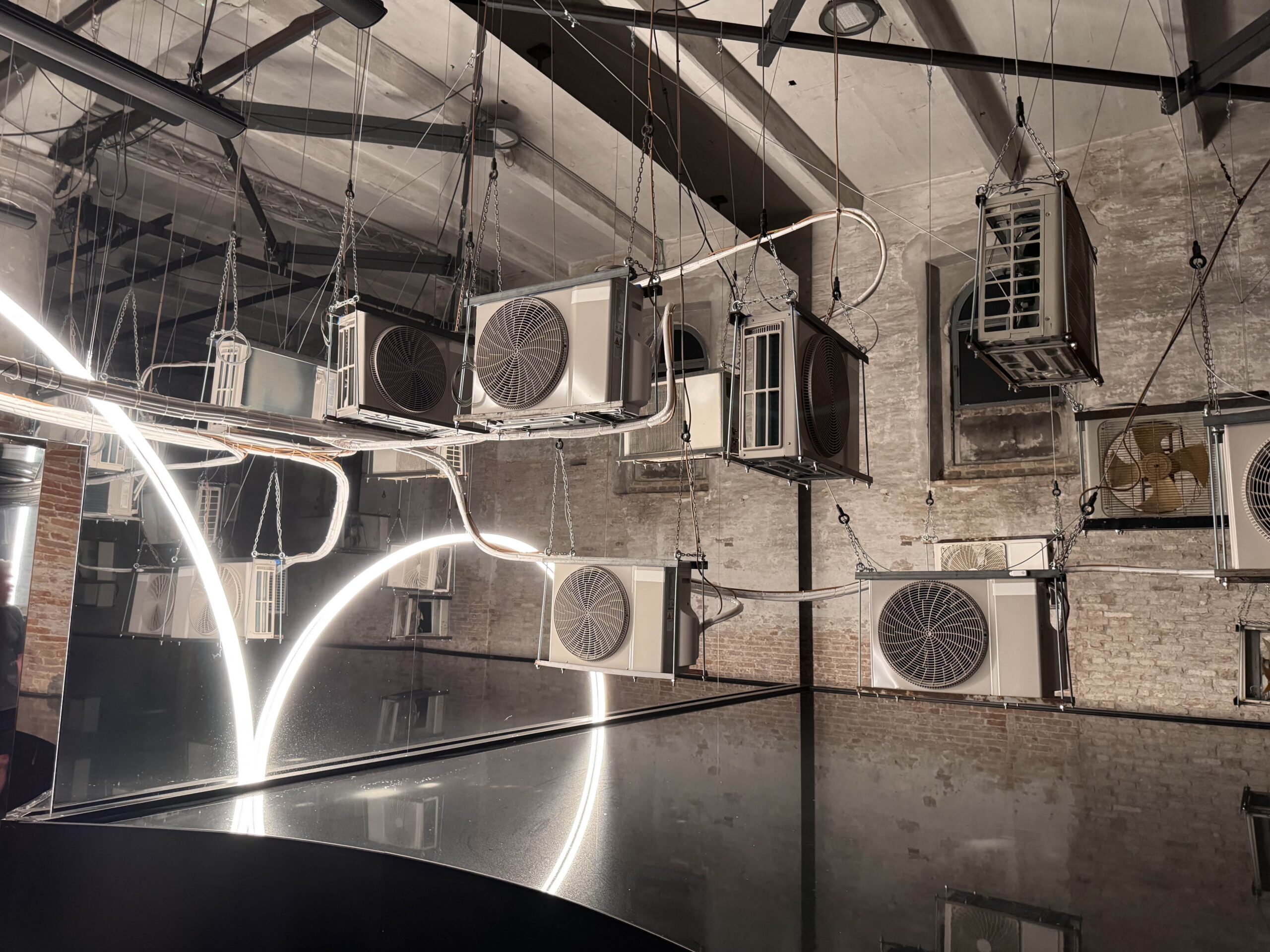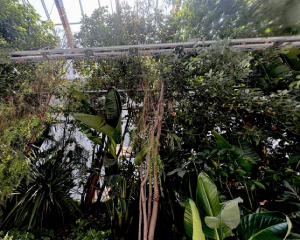
Cool Ideas for a Hot Planet: Rethinking Air Conditioning with Sebastian Clark Koch
By Gayil Nalls
Sign up for our monthly newsletter!
A t this year’s Venice Architecture Biennale, architect and climate technologist Sebastian Clark Koch moderated a timely and urgent session: “Designing for Thermal Equity in the Age of Extremes.” Bringing together leading voices in architecture, environmental science, and policy, the session explored how climate-adaptive design can bridge the growing gap between those with and without access to safe, sustainable cooling, drawing on lessons learned from and for the Global South and highlighting how local innovations can inform and shape a more resilient global future.
It’s a subject that lies at the core of Koch’s work. As climate change intensifies and summers become hotter worldwide, the demand for air conditioning is skyrocketing. Yet, traditional air conditioning systems are a double-edged sword. While they provide life-saving comfort, they are also among the most energy-intensive and environmentally damaging technologies in widespread use. Koch is reimagining the very idea of cooling, designing systems that keep people comfortable without heating the planet.

Rethinking comfort in the Anthropocene, Koch, known for his radical design work at the intersection of climate and architecture, believes that the future of cooling must align with planetary boundaries. In his research and consulting, he examines how we can move away from fossil-fueled cooling systems toward regenerative, low-energy, and passive solutions that not only reduce energy demand but also transform how we think about indoor space, comfort, and air itself. “The standard AC is a 20th-century solution to a 21st-century crisis,” Koch explains. “We need to design cooling systems that are adaptive, decentralized, and symbiotic with their environments.”
Today, over 2 billion air conditioning units are in use globally, and that number is expected to triple by 2050. This surge is not only straining electricity grids, often powered by fossil fuels, but is also accelerating global warming through the release of hydrofluorocarbons (HFCs), potent greenhouse gases used as refrigerants.

Koch argues that we are caught in a vicious cycle: hotter temperatures increase the need for cooling, which in turn contributes to climate change. “It’s one of the clearest feedback loops we’ve created,” he says. His approach favors passive cooling, design strategies that reduce the need for mechanical cooling in the first place. These include:
Thermal mass and natural ventilation: Using thick walls, earth materials, and smart window placement to regulate temperature without electricity.
Green facades and roofs: Vegetation not only insulates buildings but also cools through evapotranspiration.
Shading and reflective surfaces: Overhangs, louvers, and light-colored roofs significantly reduce solar heat gain.
Night flushing and phase change materials: These techniques release stored heat during cooler nights or absorb heat during the day through innovative materials.
His most recent designs combine these strategies with small, energy-efficient cooling units that use natural refrigerants, such as CO₂ or ammonia, avoiding the HFC problem entirely.
Koch is particularly focused on solutions for the Global South, where the need for cooling is critical but access to energy is limited and the effects of climate change are most acutely felt. He collaborates with local architects, engineers, and communities to develop cooling strategies that are low-tech, affordable, and culturally adapted, such as cool roofs made from recycled materials or modular shading systems that can be deployed in informal settlements. “Cooling justice,” he notes, “is as important as climate justice.”
While Koch’s work is grounded in design, he also emphasizes the need for policy shifts, such as building codes that mandate passive cooling, incentives for green roofs, or bans on harmful refrigerants. He also sees promise in emerging technologies like solar-powered AC, thermal batteries, and AI-optimized climate control systems.
Yet for Koch, the greatest transformation may be cultural. “We’ve been sold a narrow idea of comfort,” he says. “We need to reconnect with older, wiser ways of staying cool, like the shaded courtyards of North Africa or the wind towers of Iran, and combine them with modern science.”
Sebastian Clark Koch’s work is part of a growing movement that not only sees indoor climate control as a sealed-off, energy-hungry process but also as an opportunity to engage more deeply with our environments, designing buildings that breathe, adapt, and harmonize with the seasons.
Gayil Nalls, PhD is an interdisciplinary artist and theorist. She is the founder of the World Sensorium Conservancy and the editor of its journal, Plantings.
For a cooler, more resilient future, you can explore Dr. Sebastian Clark Koch’s research here: https://www.researchgate.net/profile/Sebastian-Clark-Koth. I especially recommend his paper, “Dynamic Cooling – Mitigating Climate Change through Temporal Discomfort,” which proposes adjusting indoor cooling temperature profiles to align with the human circadian rhythm, reducing heat stress during periods of heightened thermal sensitivity.
Plantings
Issue 49 – July 2025
Also in this issue:

Aromatic Plants at the Crossroads of Fire Resilience and Risk
By Gayil Nalls

Building Biospheres: Rewilding Architecture at the Venice Biennale
By Gayil Nalls

Scents, Sounds, and the Little Things In Between: A Conversation with Jenny Hval
By Ian Sleat

All the Places I Have Breathed
By Caterina Gandolfi

The Shocking Power of Bees
By Gayil Nalls

Eat More Plants Recipes:
Grilled Chipotle-Lime Portobello Tacos
By Ian Sleat

As Ireland transitions from the rich, smoky scent of peat-burning to a more sustainable future, its olfactory heritage is evolving. What will become the next iconic aromatic symbol of Ireland?
Click to watch the documentary trailer.

